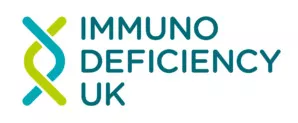Summary
Hyper IgM is an antibody deficiency. People with hyper IgM syndrome have abnormal levels of antibodies or immunoglobulins. Although the condition’s name implies that affected individuals always have high levels of immunoglobulin M (IgM), some people have normal levels of this antibody. The common feature is that those affected have low levels of three other classes of antibodies: immunoglobulin G (IgG), immunoglobulin A (IgA) and immunoglobulin E (IgE). This makes it difficult for people with hyper IgM to fight off infections.
Hyper IgM syndrome results from a variety of genetic defects that affect the interaction between T-cells and B-cells, such that B-cells are not able to switch production of antibodies from IgM to IgG, IgA and IgE.
There are four different forms of hyper IgM syndrome. The most common form is X-linked hyper IgM syndrome that is inherited as an X-linked recessive pattern, is usually found only in boys and is caused by mutations in the CD40 ligand gene. Other forms of hyper IgM syndrome are inherited as autosomal recessive traits and affect both sexes. These are caused by mutations in genes affecting the signalling necessary between T- and B-cells to produce the full range of antibody types (IgM, IgG, IgA and IgE) needed to have a healthy immune system.
The severity of the condition varies within and among the different types of hyper IgM syndromes. Common symptoms are frequent severe infections in infancy and early childhood. Common infections include pneumonia caused by pneumocystis carinii, sinus infections (sinusitis) and ear infections (otitis). Infections often cause those affected to have chronic diarrhoea and they may fail to gain weight and grow at the expected rate, known as failure to thrive.
Treatment of hyper IgM syndrome is immunoglobulin replacement therapy and antibiotics, and many people affected lead normal, healthy lives, provided that they receive adequate replacement immunoglobulin and appropriate treatment for infections. Hematopoietic stem cell transplantation, such as a bone marrow transplant, can offer a permanent cure for people with hyper IgM syndrome.





